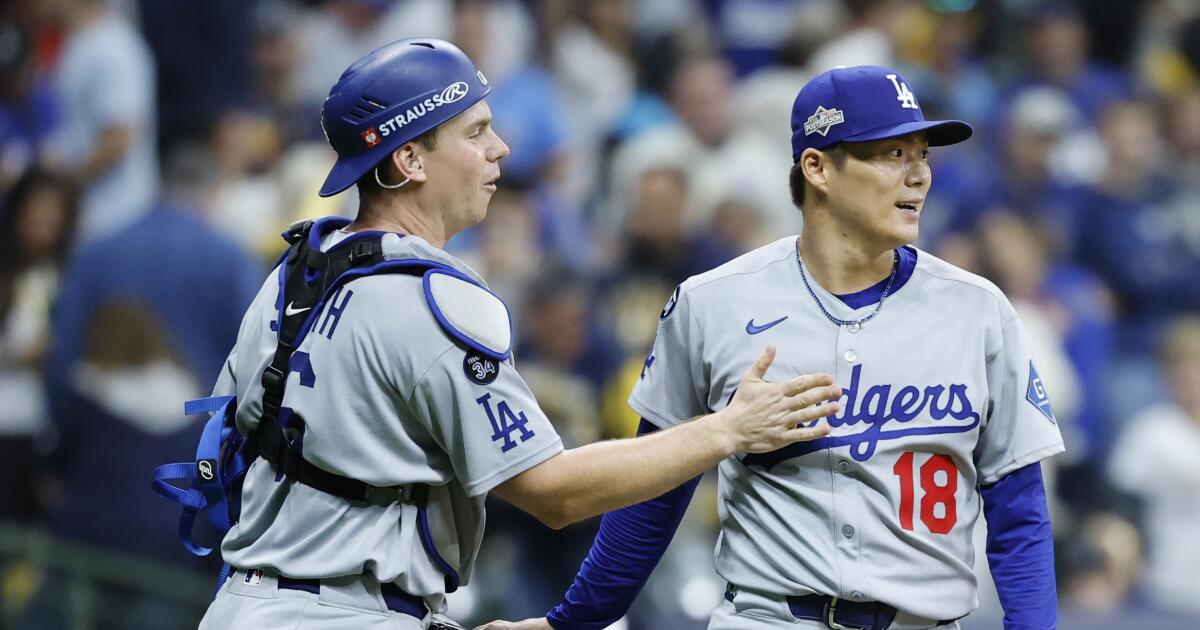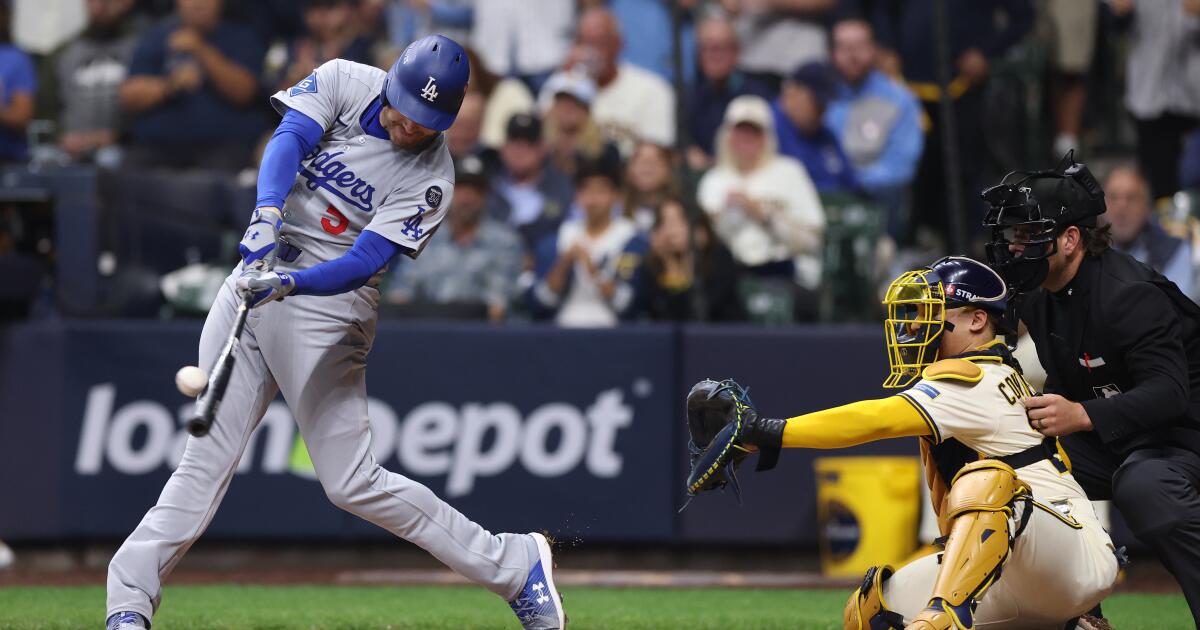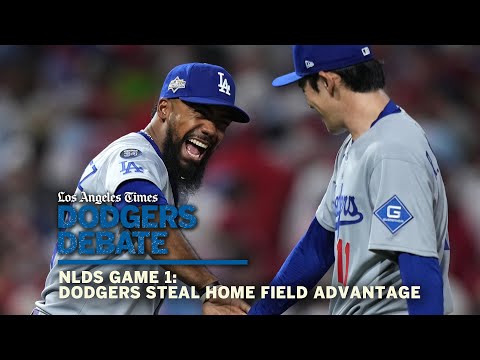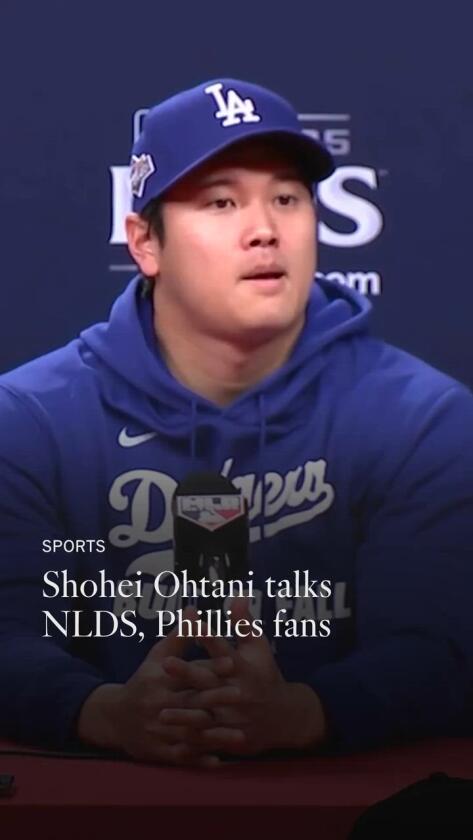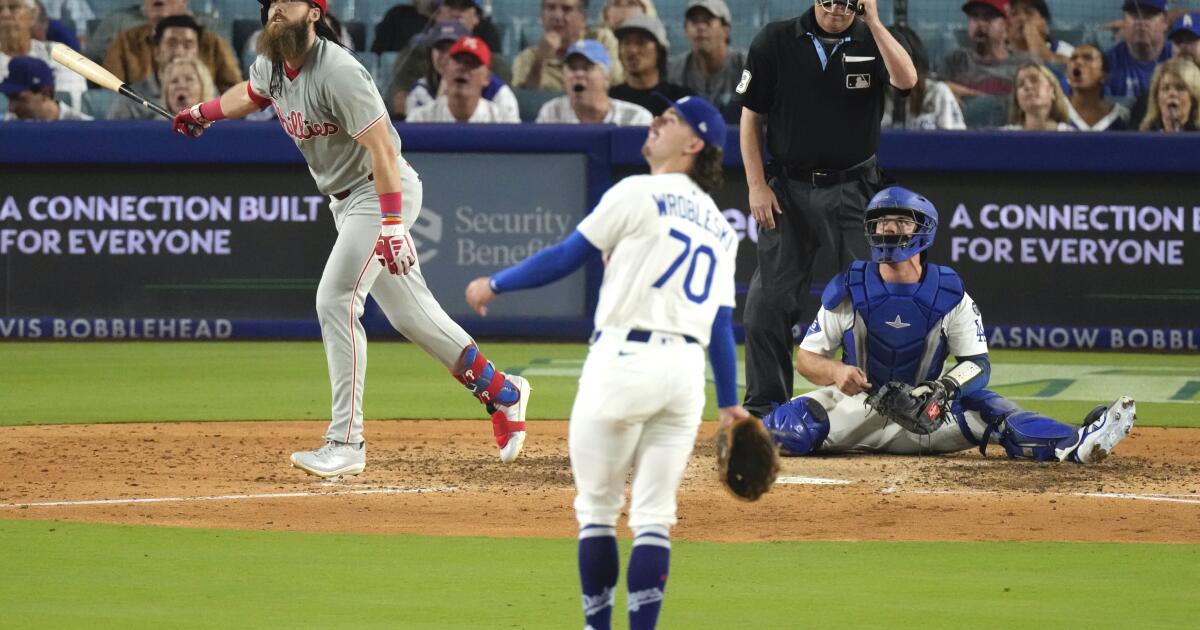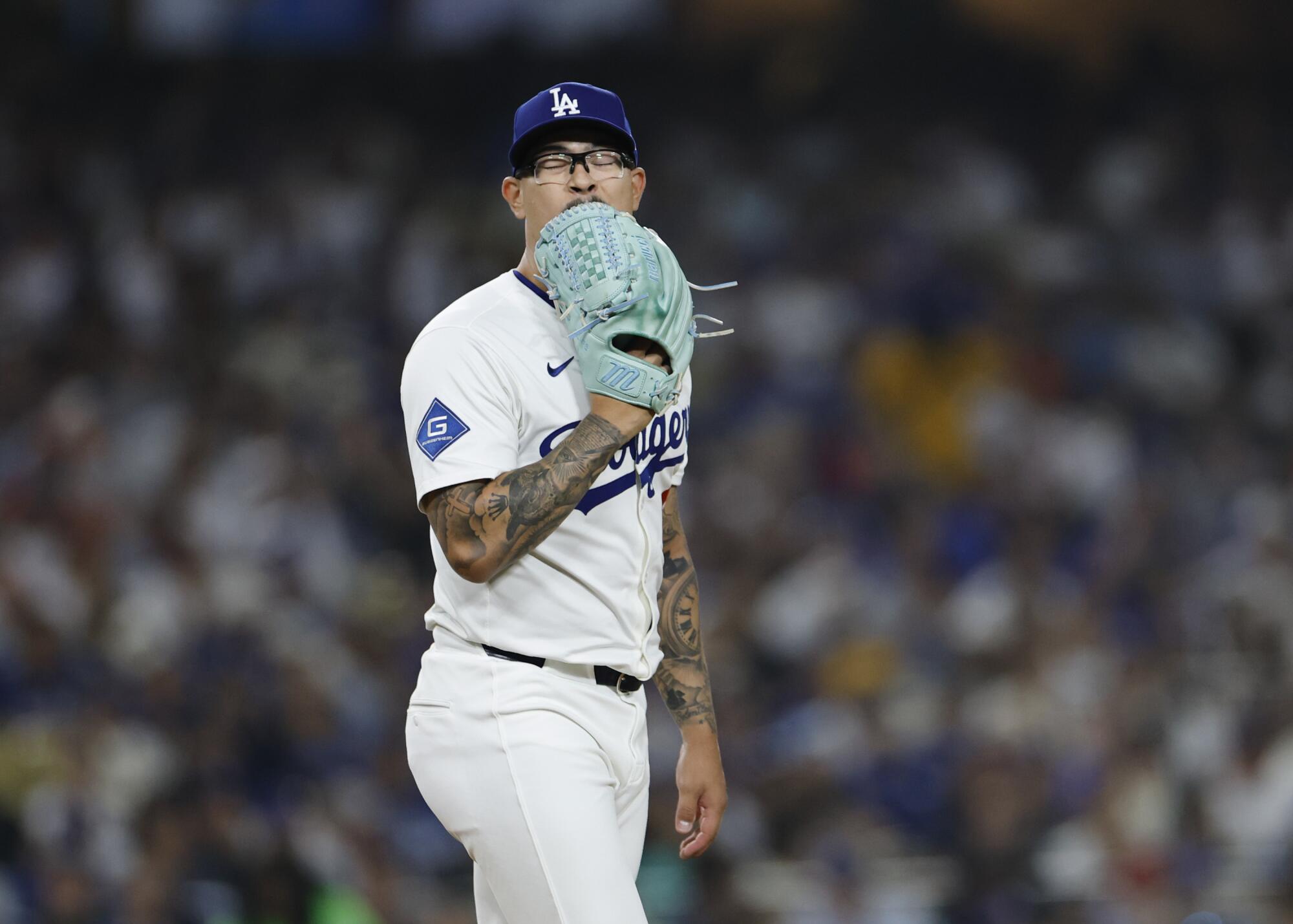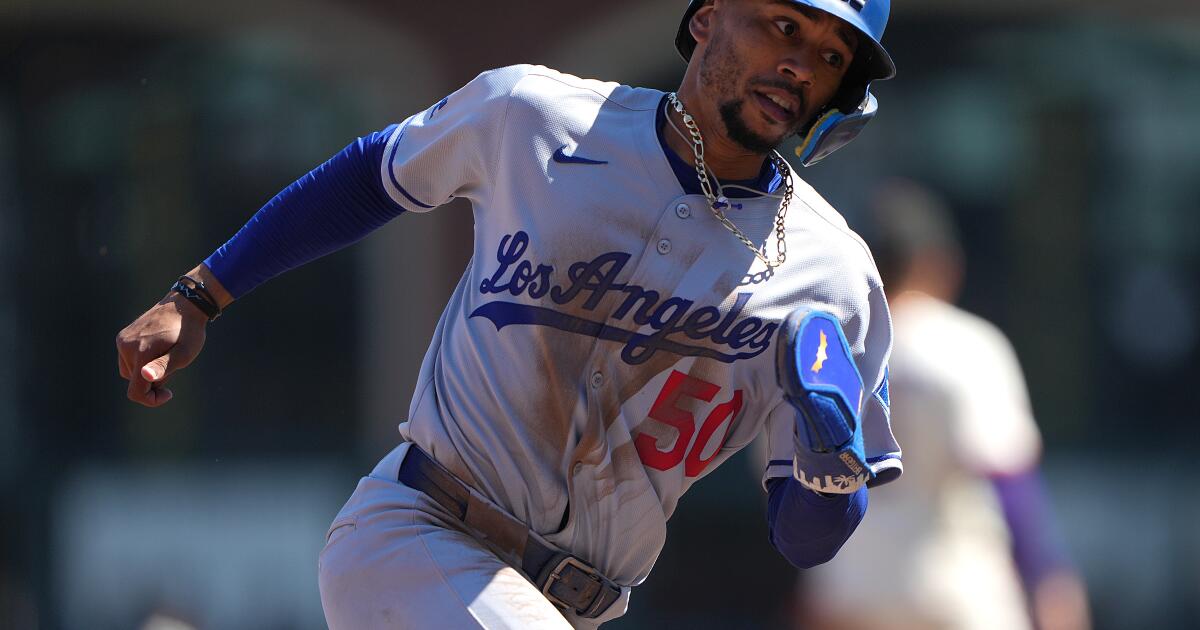Yoshinobu Yamamoto’s complete game is Dodgers’ latest pitching flex
MILWAUKEE — Technically, Roki Sasaki was available to pitch in relief for the Dodgers on Tuesday night.
Realistically, he wasn’t.
“I wouldn’t say unavailable,” manager Dave Roberts said before the game. “But it is unlikely that we will use him.”
Without the most electric arm in their unreliable bullpen, how could the Dodgers record the final outs required to win Game 2 of the National League Championship Series?
Here’s how: By making their bullpen a non-factor.
Yoshinobu Yamamoto tossed a complete game, becoming the first Japanese pitcher to do so in a postseason game. The offense spared Roberts another late-inning scare by tacking on insurance runs in the sixth, seventh and eighth innings.
The result was a 5-1 victory over the Milwaukee Brewers at American Family Field that extended the Dodgers’ lead in the NLCS to two games to none.
Two more wins and the Dodgers will advance to the World Series for the third time in six seasons. Two more wins and they will be positioned to become baseball’s first repeat champions in 25 years.
Ninety-three teams have taken a two-games-to-none lead in a best-of-seven postseason series. Seventy-nine of them have advanced.
In other words, this series is over.
If the Philadelphia Phillies couldn’t overturn a 2-0 deficit against the Dodgers, these overmatched tryhards in Milwaukee certainly won’t.
With the next three games at Dodger Stadium and Tyler Glasnow, Shohei Ohtani and Blake Snell scheduled to start those games, the most pressing question about this NLCS is whether it will return to baseball’s smallest market for Game 6.
Don’t count on it.
The Brewers’ bullpen was supposed to be superior to the Dodgers’, but that advantage has been negated by the Dodgers’ superior starting pitching.
Reaching this stage of October has forced the Brewers to exhaust their relievers, so much so that by the time closer Abner Uribe entered Game 2 in a sixth-inning emergency, he might as well have been Tanner Scott.
“We’re more depleted than the Dodgers are,” Brewers manager Pat Murphy said.
The workload made the Brewers’ bullpen as rickety as the Dodgers’, and that was with Sasaki just spectating.
What decided the game was that Murphy had to rely on his bullpen and Roberts didn’t.
Brewers starter Freddy Peralta pitched 5 ⅔ innings. A day after Snell faced the minimum number of batters over eight innings, Yamamoto registered every one of the 27 outs required to win a game.
Roberts said he didn’t hesitate to send back Yamamoto to the mound for the ninth inning. The night before, he called on Sasaki to close, and the decision to remove Snell nearly cost the Dodgers the game.
“Obviously,” Roberts said as diplomatically as he could, “there’s been things with the bullpen.”
Things now include Sasaki, whose ability to shoulder an October workload has come into question after he failed to complete the ninth inning in Game 1. In the game in question, Sasaki gave up a run and had to be replaced by Blake Treinen.
Sasaki’s form in Game 1 sounded alarm bells, and rightfully so. The converted starter still looked exhausted from his three-inning relief appearance against the Philadelphia Phillies in Game 4 of the NL Division Series. His fastball velocity has gradually declined over the postseason, and he’s not the type of pitcher who can be as effective throwing 96 mph as he is when he’s throwing 100 mph.
Sasaki has never pitched as a reliever in the United States or Japan. He spent 4 ½ months on the injured list this year with a shoulder impingement. Just as the Dodgers didn’t know what they could expect from him when they first deployed him out of the bullpen, they don’t know what they can expect from him now moving forward.
“It’s one of those things that we’re still in sort of uncharted territory with him,” Roberts said.
At various stages of the season, the Dodgers have asked themselves the same questions about their downtrodden bullpen: How could they survive when their firemen on their roster were also arsonists? How could they win a World Series with such an untrustworthy group of late-inning options?
In this NLCS, the Dodgers have shown how. They will use them as infrequently as possible.
